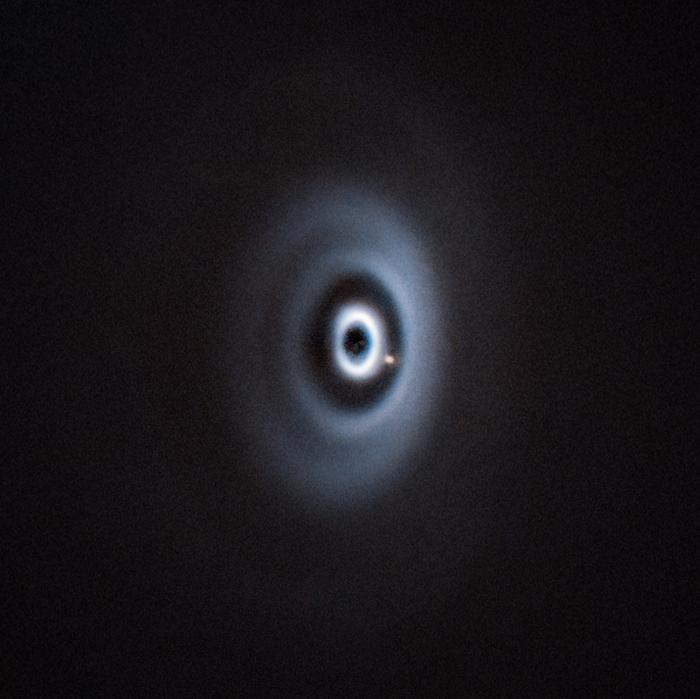Astronomers have unveiled a remarkable discovery that could transform our understanding of planet formation.
An international research team, co-led by scientists at the University of Galway, has identified a giant planet in the earliest stages of development, orbiting a young star that closely resembles our own Sun in its infancy.
The newly detected world, named WISPIT 2b, is estimated to be just five million years old – an astronomical blink of an eye compared to the 4.5-billion-year-old Earth.
Based on its size and characteristics, researchers believe it is a gas giant roughly comparable to Jupiter.
Unveiling WISPIT 2b with cutting-edge technology
The discovery was made possible using the European Southern Observatory’s Very Large Telescope (VLT), located in Chile’s Atacama Desert.
Considered one of the world’s most advanced astronomical facilities, the VLT allowed researchers to capture the glowing planet in near-infrared light. This wavelength revealed WISPIT 2b as it continues to radiate heat from its initial formation.
Dr Christian Ginski, lecturer at the School of Natural Sciences, University of Galway and second author of the study, explained: “We used these really short snapshot observations of many young stars – only a few minutes per object – to determine if we could see a little dot of light next to them that is caused by a planet.
“However, in the case of this star, we instead detected a completely unexpected and exceptionally beautiful multi-ringed dust disk.
“When we saw this multi-ringed disk for the first time, we knew we had to try and see if we could detect a planet within it, so we quickly asked for follow-up observations.”
The planet’s detection marks a milestone in astronomy. It is only the second confirmed discovery of a planet caught at such an early evolutionary stage around a young solar-type star.
Even more striking, WISPIT 2b is the first clear example of a planet embedded within a multi-ringed disk of dust and gas, offering an unprecedented laboratory for studying how planets interact with their birth environment.
Evidence of a growing atmosphere
In addition to its infrared glow, researchers from the University of Arizona confirmed the planet’s presence in visible light using a highly specialised instrument.
This detection at a specific wavelength indicates that WISPIT 2b is still actively accreting gas – a sign that it is in the process of forming its atmosphere.
This evidence strengthens the view that astronomers have captured WISPIT 2b at a crucial moment of growth, offering a front-row seat to processes that shaped not only our Solar System but countless planetary systems across the galaxy.
The cosmic cradle of planet formation
WISPIT 2b resides within a vast protoplanetary disk surrounding its host star. These disks, composed of gas and dust, are the birthplaces of planets.
The one encircling WISPIT 2b has an immense radius of 380 astronomical units – about 380 times the distance between Earth and the Sun.
These disks often display striking structures such as rings and spiral arms, which astronomers believe are carved by forming planets.
Observing such features in real time helps researchers better understand how planetary systems evolve into the diverse configurations observed today.
A new chapter in understanding planet formation
For astronomers, WISPIT 2b represents far more than just another exoplanet. It offers a living snapshot of the planet formation process, bridging the gap between theoretical models and observable evidence.
As technology advances, researchers expect that systems like this will reveal why planetary systems – our own included – can look so dramatically different from one another.
The discovery is already drawing global attention. With WISPIT 2b now in the spotlight, scientists anticipate years of follow-up studies that could redefine what we know about the birth and evolution of planets.
